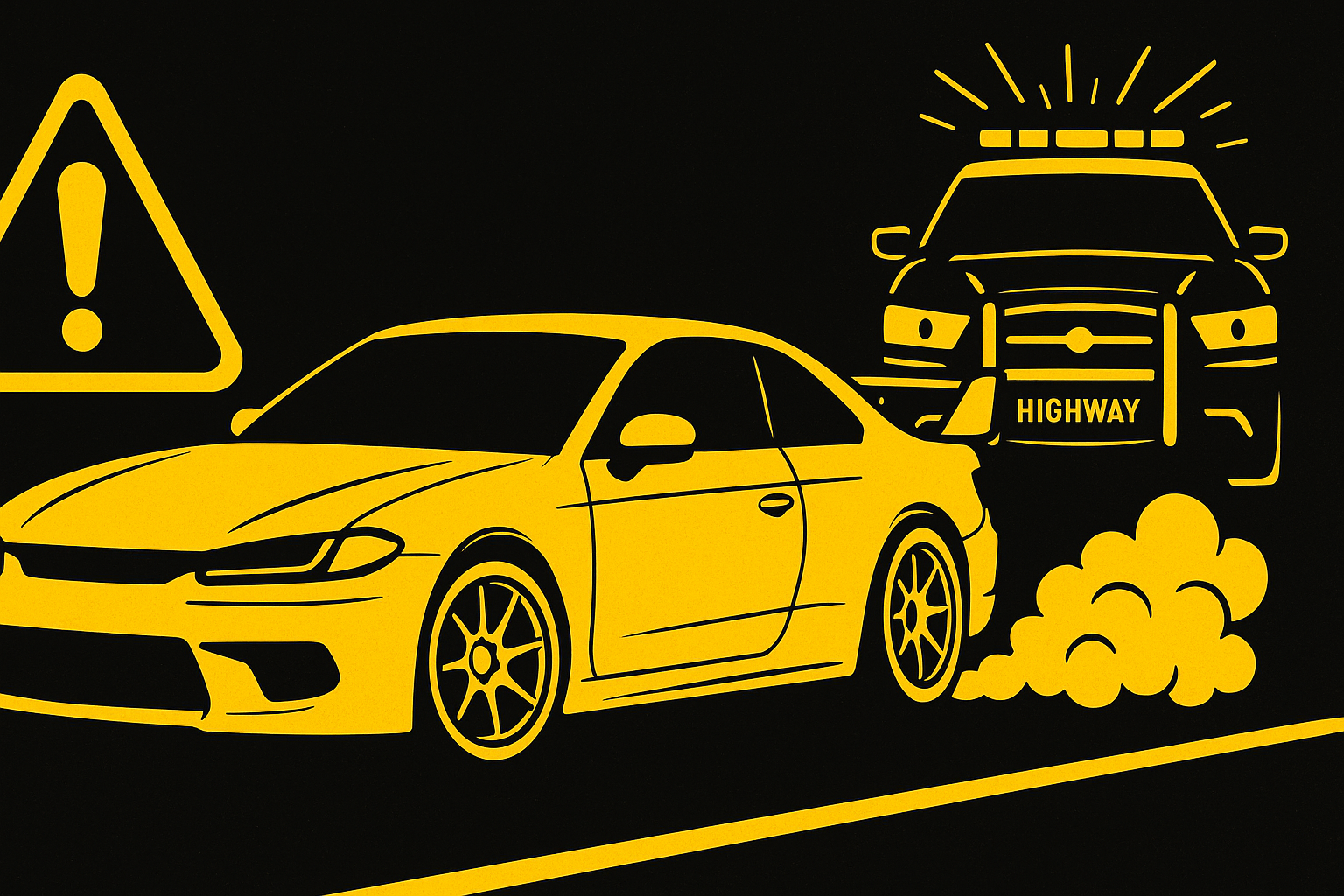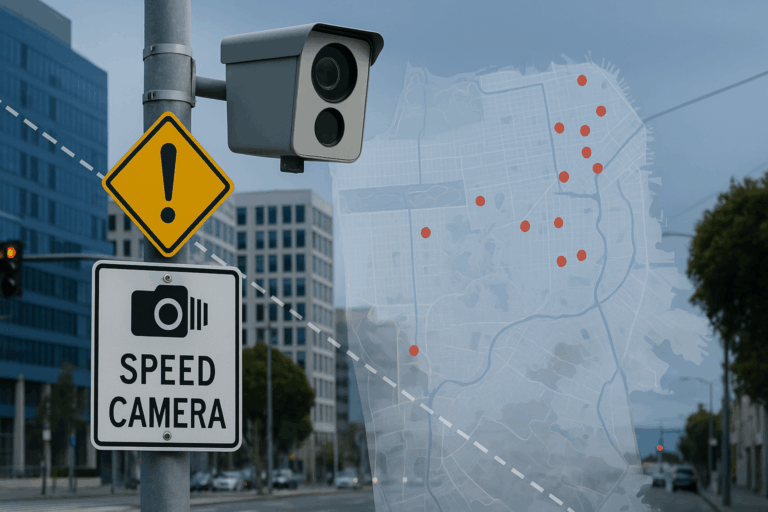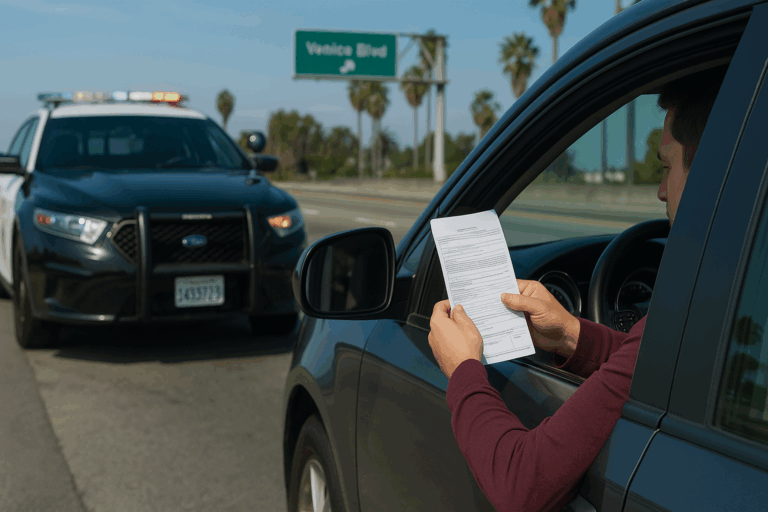Navigating through school zones in California requires extra attention and care. These areas are designed to ensure the safety of children, parents, and school staff, making it crucial for drivers to adhere strictly to traffic laws. With fines for violations often steep and penalties significant, avoiding a traffic ticket in a school zone should be a priority for all drivers. Here’s a guide to help you steer clear of citations while driving near schools in California.
1. Know what makes School Zones a school zone
First, what is a school zone exactly as it pertains to California law?
A school zone refers to any area on a highway—which includes roads and streets open to vehicle use—that surrounds a school building and its grounds.
This encompasses the section of road that approaches or passes the school and isn’t separated by a fence or other barrier, according to the law.
California Vehicle Code 40802 states there must be a sign to notify drivers about the school zone’s presence.
The school zone is enforced while the grounds are being used by children “going to or leaving the school either during school hours or during the noon recess period,” according to the code.
The California Department of Motor Vehicles specifies that the speed limit is 25 mph within 500 feet of a school zone when children are present.
In certain areas, some school zones may have posted speed limits requiring drivers to reduce their speed to 15 mph.
2. Be Aware of School Zone Hours
School zones typically have specific hours during which the reduced speed limits are enforced, often during morning drop-off and afternoon pick-up times. These hours can vary depending on the school district, so it’s wise to familiarize yourself with the schedule of schools along your regular routes. Even if it’s not within the standard hours, if you see children present, you should reduce your speed to the posted limit.
“Children are determined to be “present” whenever they are on the side of the school’s fence or barrier closest to the road. This would include drop-off and pick-up times. If the roadway is engineered to have a speed limit of 30 mph, then the motorist would have to lower their speed to 25 if children are present, When children are not physically present in the school zone but still on school grounds, Olsen said drivers must still go at a “safe” speed. “If it’s 10 a.m. and children are corralled in a fenced area during recess, then motorist may go (the regular speed limit if it’s) safe to do so,” Olsen wrote. Though school hours in California might range from about 7 a.m. to 4 p.m., Olsen said drivers should still be cautious when passing by a school zone because after-school programs can last until 6 p.m. “It is always best practice to lower your speed when near school zones and exercise a high visual horizon,” Olsen said, “looking down the road for potential hazards.” When children are not present in the school zone, Olsen said drivers can return to the posted business or residential speed limit, which is often 25 mph. Check out the full story in the Sacramento Bee.
3. Avoid Distracted Driving
Distracted driving is dangerous at any time, but it’s especially hazardous in school zones. California law prohibits the use of handheld devices while driving, and this is strictly enforced in school zones. Keep your phone out of reach, and avoid any activity that takes your attention off the road. Distracted driving in a school zone not only increases the risk of a ticket but also endangers children’s lives.
4. ALWAYS Yield to Pedestrians
In school zones, pedestrians always have the right of way. You must stop for any pedestrian crossing the street at a crosswalk or intersection, whether or not there are signals indicating to do so. Be particularly vigilant for children who may not always pay attention to traffic before stepping onto the road.
5. Know the Fines and Penalties
Understanding the consequences of violating traffic laws in a school zone can serve as a strong deterrent. Fines for speeding in a school zone are significantly higher than in other areas. In some cases, the fine can double or triple depending on the severity of the violation. Additionally, points may be added to your driving record, which can lead to increased insurance rates and even the suspension of your driver’s license.
6. Plan Your Route and Timing
To avoid the stress of navigating through school zones during peak hours, consider adjusting your route or timing. If possible, take an alternative route that bypasses school zones during busy times, or leave earlier to give yourself plenty of time to drive carefully and within the speed limits.
What Happens If You Get A Ticket In A School Zone?
Getting a traffic ticket in a school zone is very common in the first few weeks when class is back in session. Often times law enforcement agencies set up large traffic enforcement sweeps to make sure everyone gets the message that it’s time to slow down. If you’re one of the unlucky people that has recently gotten a school zone traffic ticket contact us. Our traffic lawyers can help you assess the best course of action to miniumize the impact on your driving record.



